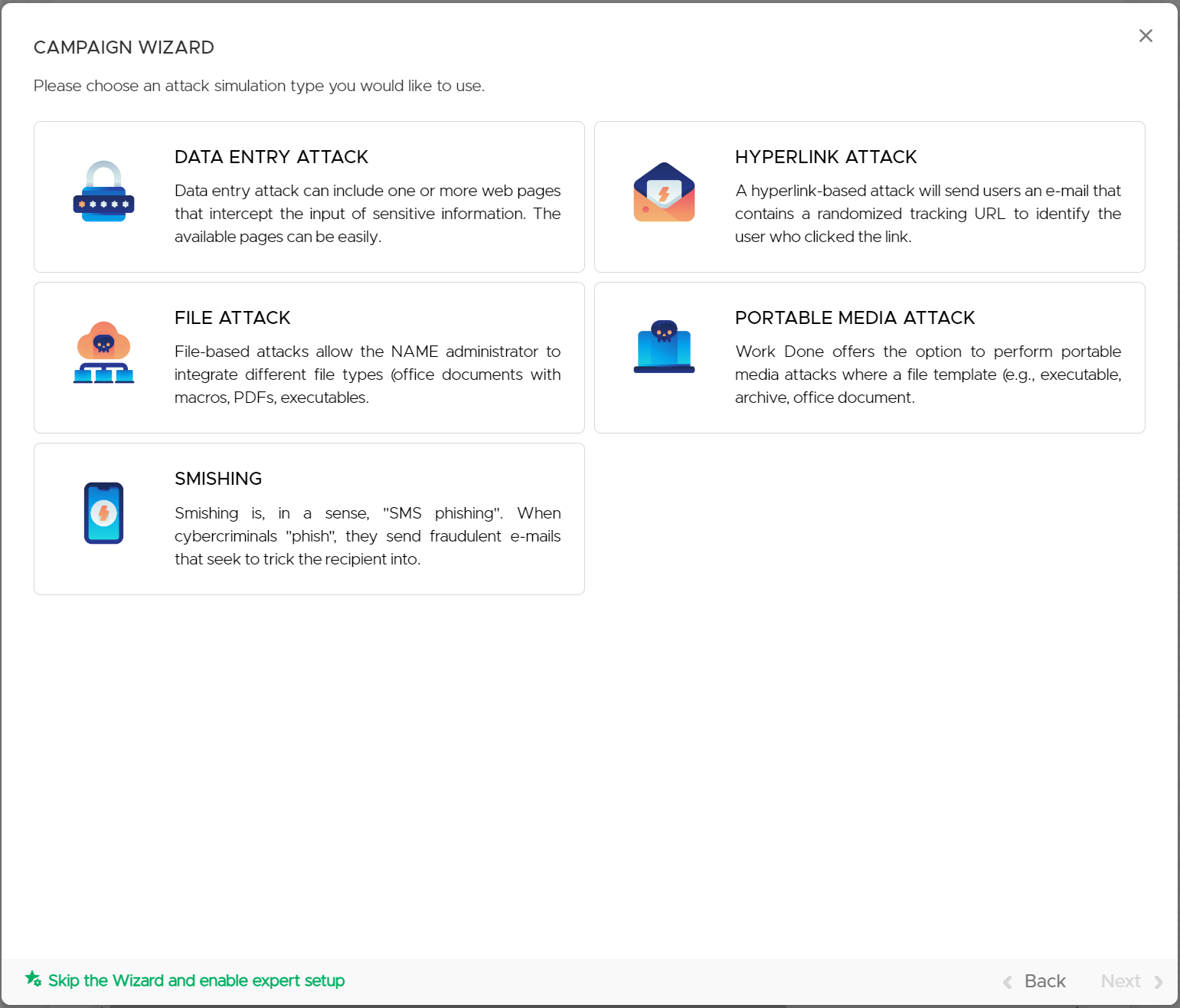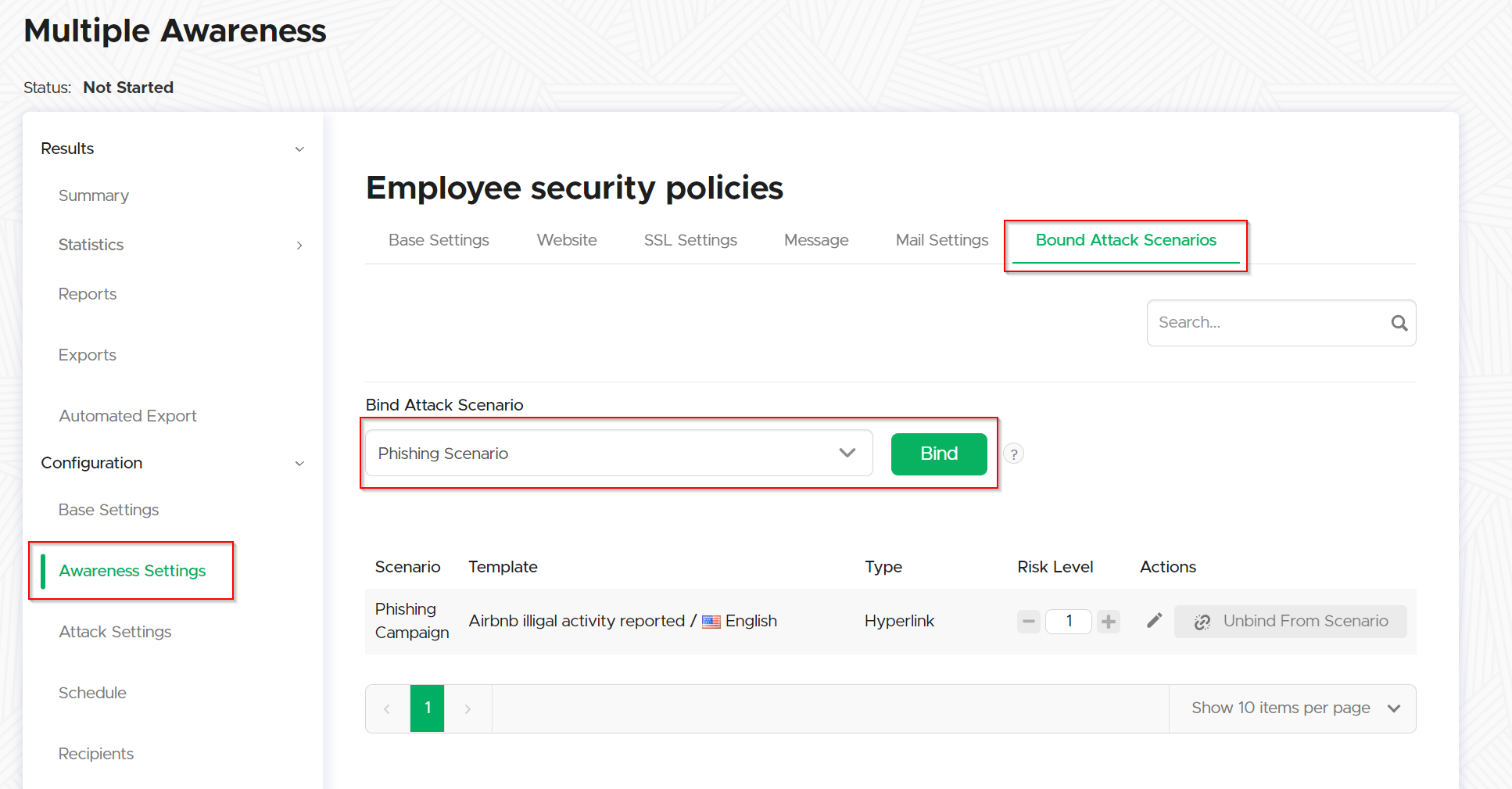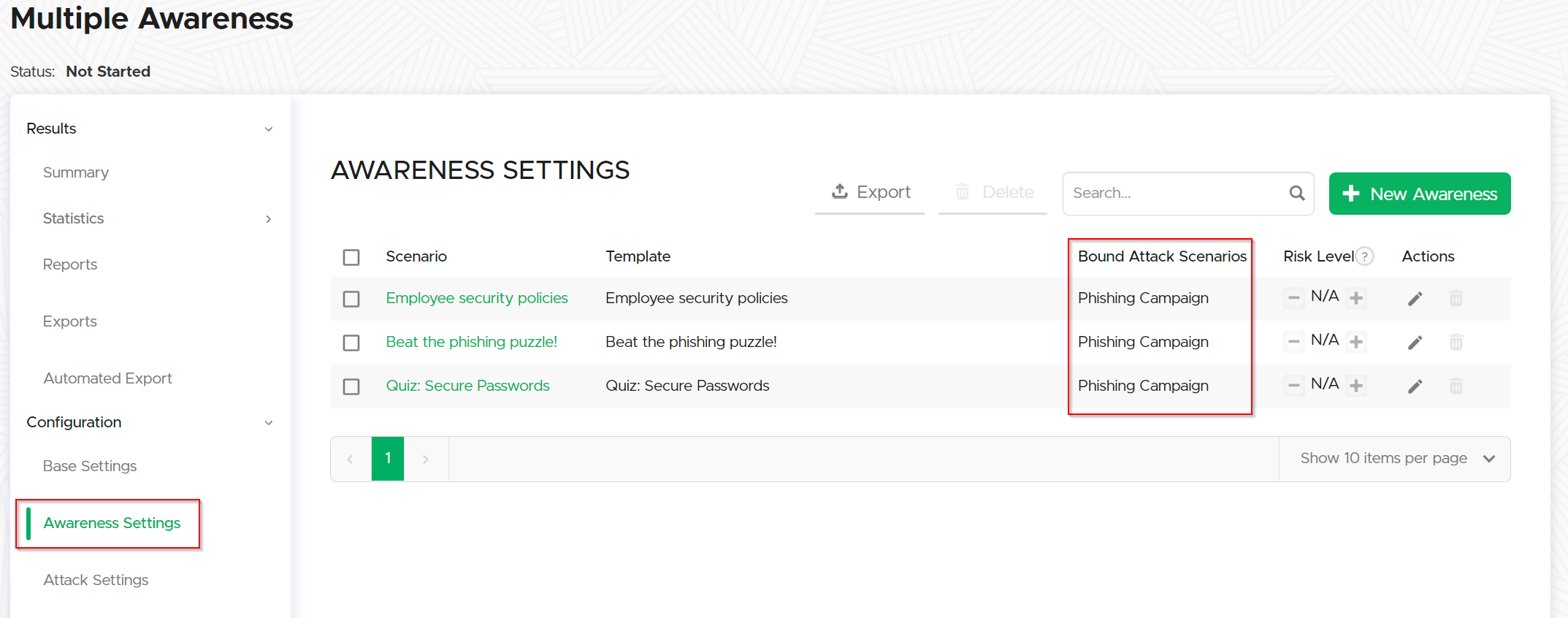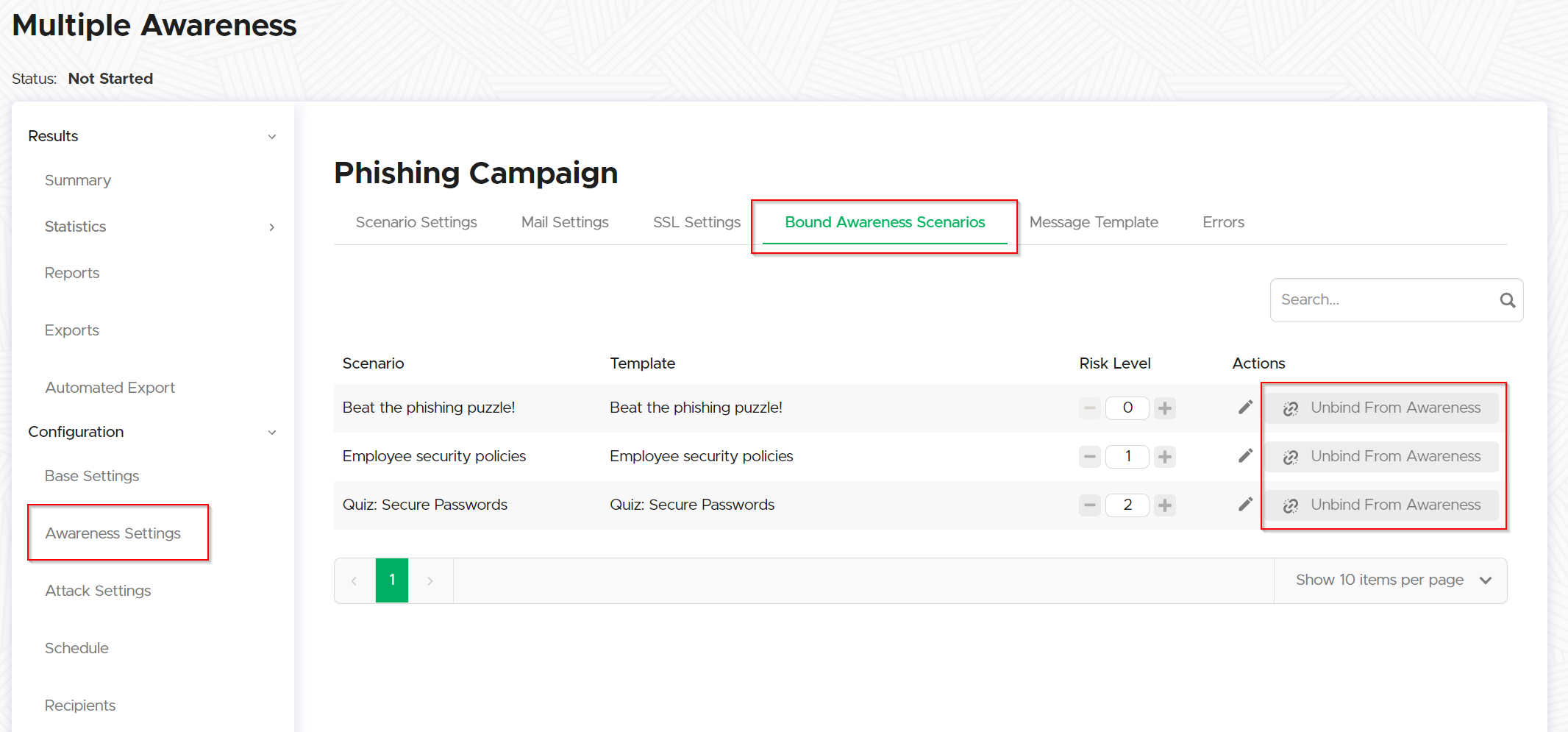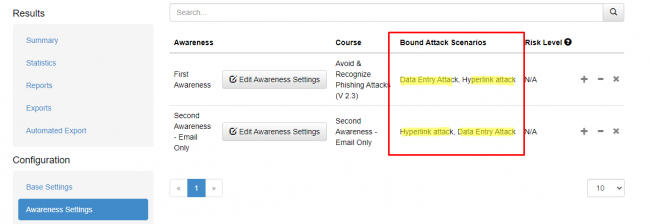Table of Contents
Binding Multiple Awareness Scenarios to particular Attack Scenarios
In the latest Lucy builds one has the possibility to choose which Awareness scenarios are mapped to particular Attack scenario. Imagine you're currently running a campaign that includes four attack scenarios aiming to test users capability to recognize and avoid various phishing attack types (e.g. data entry, hyperlink attack, or file download).
In such a case it makes sense to send awareness to users accordingly to the attacks that they failed to recognize. For example, user did not click on a malicious link and avoided entering any data in some attack scenarios but fell into downloading malware simulation file that was disguised as an internal document and appeared as an attachment to the fake newsletter. User's result implies that he or she is aware of possible hyperlink attacks but doesn't know how to recognize a file-attack. Thus, there is no need to provide a user with a complete A-Z course on avoiding phishing that will take an hour of his busy schedule. But it makes sense to send him a short awareness describing precisely what a file-attack is and how to detect it. And here comes Awareness scenarios binding.
How to bind attack scenarios
Within the campaign proceed to Awareness Settings and choose the scenario to edit. Then proceed to Bound Attack Scenarios tab and choose the attack scenario from the Bind Attack Scenario drop-down menu. Click on the Bind button and the scenario will appear on the list.
Thus users will receive awareness training according to the attack scenario they fail.
On the Awareness Settings tab, one can review which attack scenarios are bound to awareness.
Also, it is possible to review which awareness scenario is bound to the attack scenario. Simply proceed to Attack Settings and choose the scenario. Within the scenario proceed to the Bound Awareness Scenarios tab. Here you can also unbind awareness scenarios if needed as well as in Awareness Settings.
In this section, it is also possible to assign the trainings for the recipients according to their reputation level. More information can be found in the dedicated wiki article Assign multiple e-learning templates based on user reputation level.
How to send several awareness scenarios to one recipient
Depending on the training workflow, one may wish users to get more than one awareness scenario if they fail several attacks. In order to be able to send several awarenesses, you should firstly bound awareness scenarios to the attacks. Make sure that each awareness scenario is bound to the right attacks.
Then you will need to create several copies of the targeted recipient group. The number of groups should correspond to the number of attack scenarios.
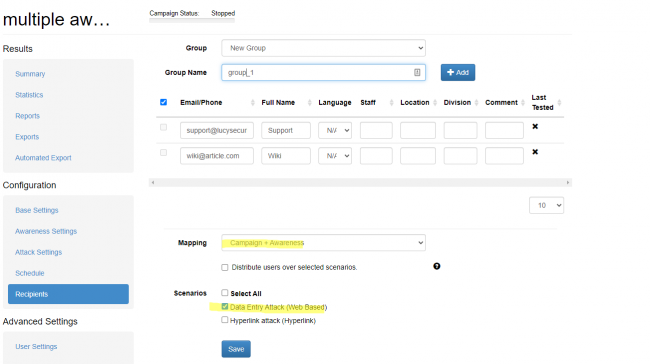
Please note: In case End User Portal feature is involved in a training process there is no need to create several recipient groups, bound pieces of training will appear in Portal at the moment user fails an attack. The feature is rather complex to embrace, especially when talking about sophisticated campaigns and never-ending employee education process. So make sure you have a rigid plan of what awareness goes after what attack and to which recipients and test your structure before running a campaign!
